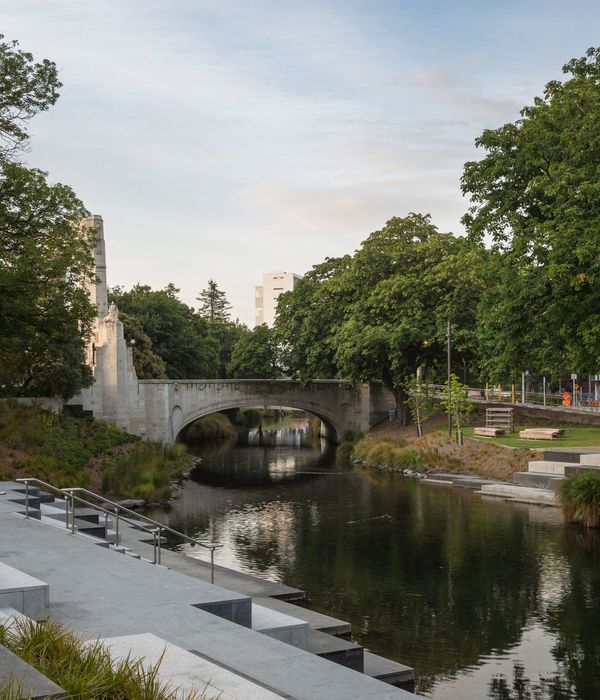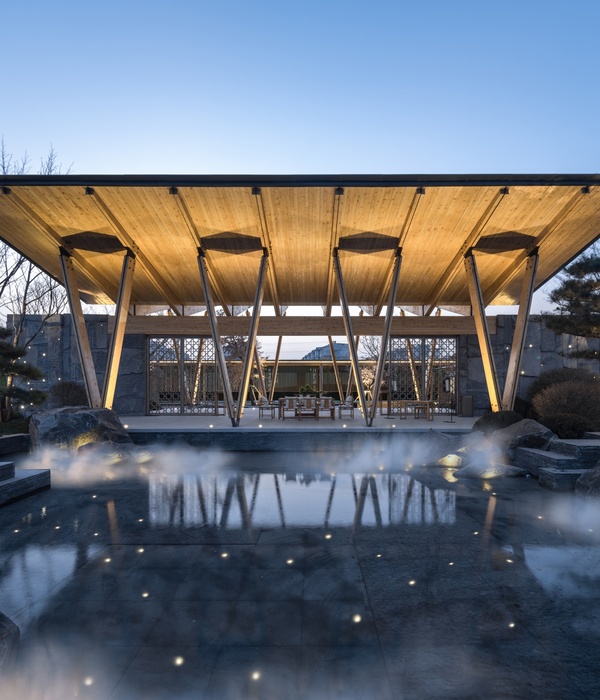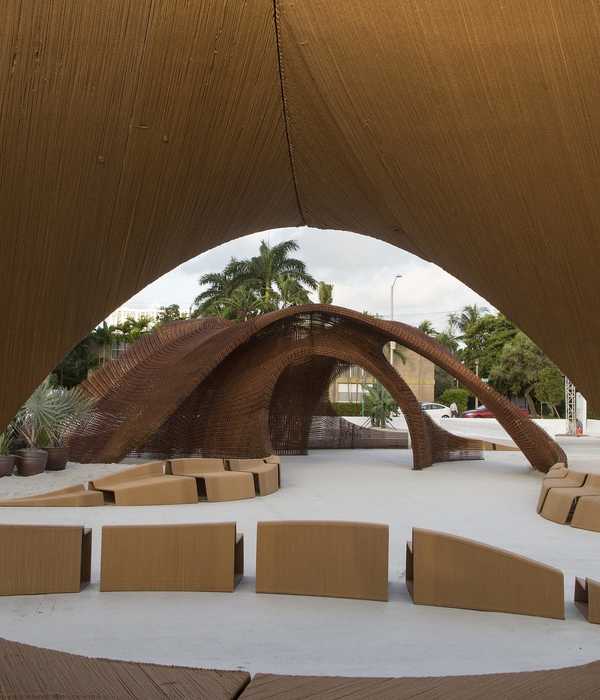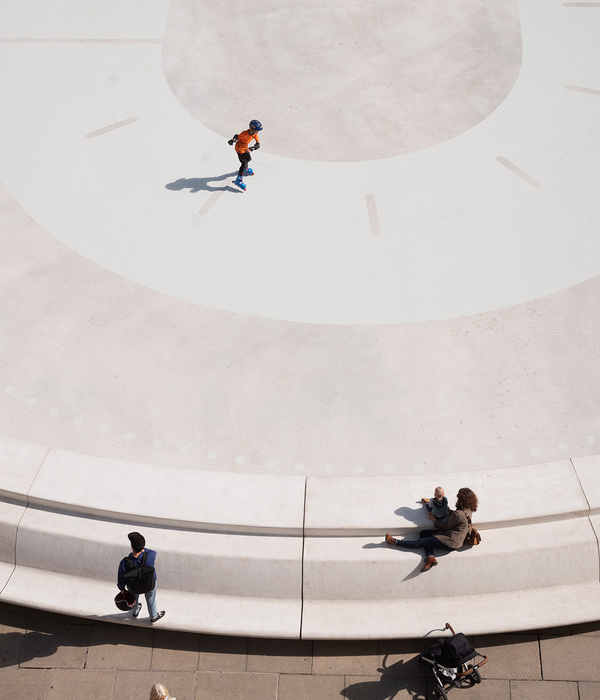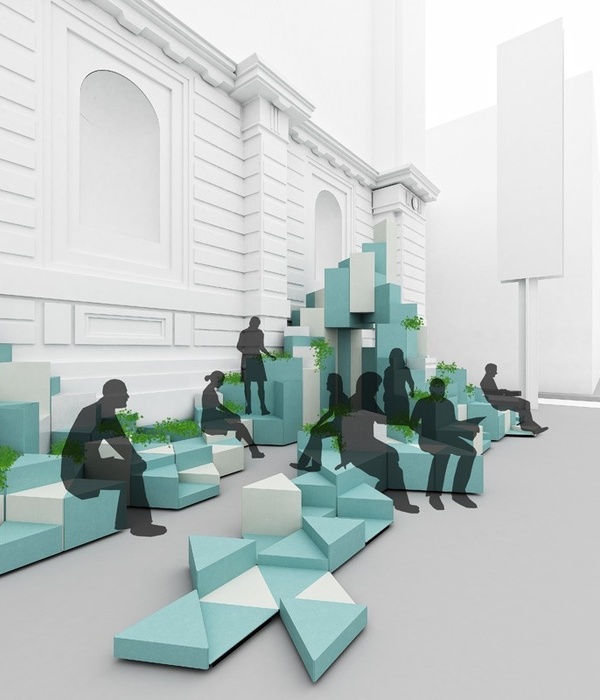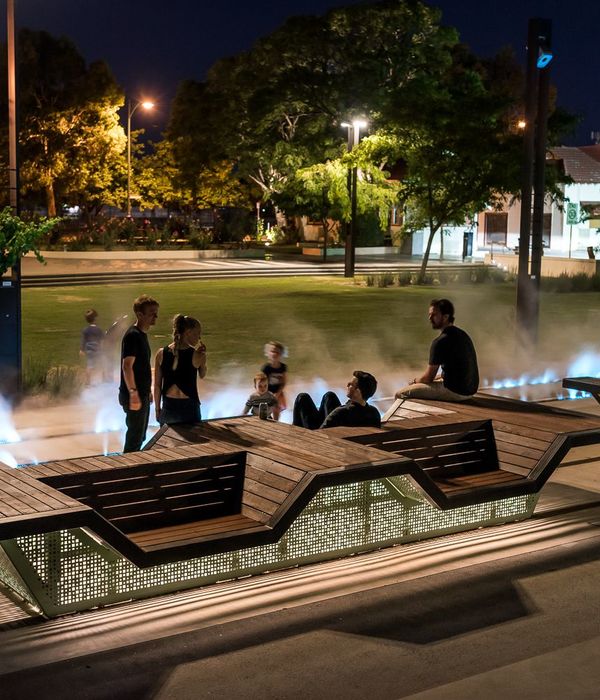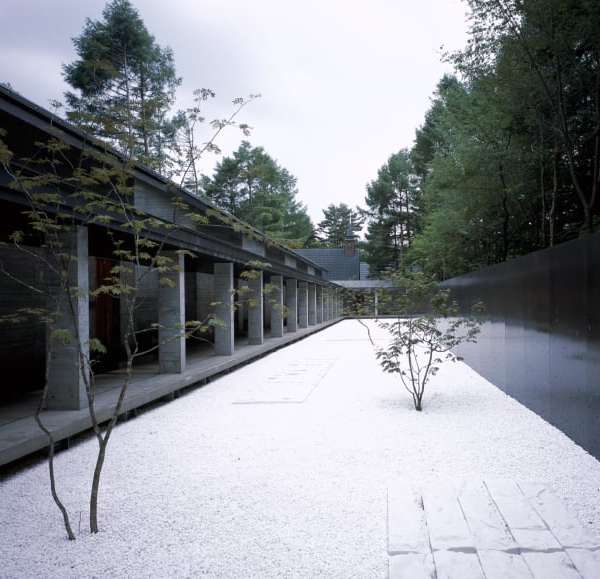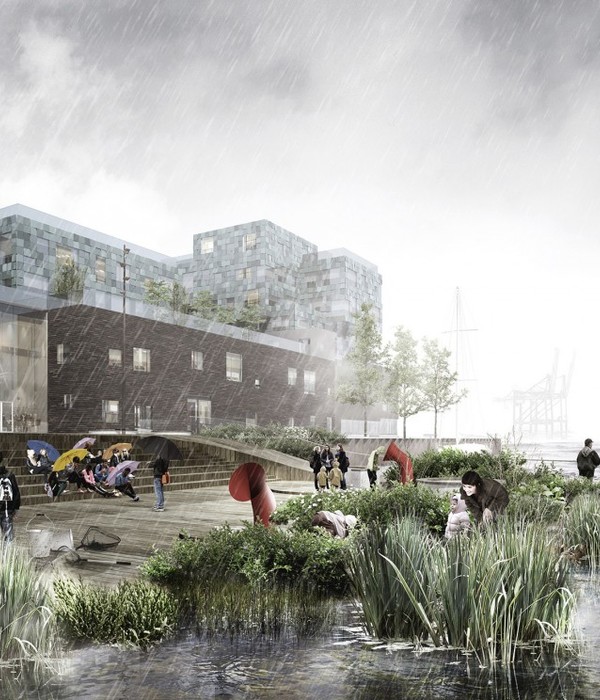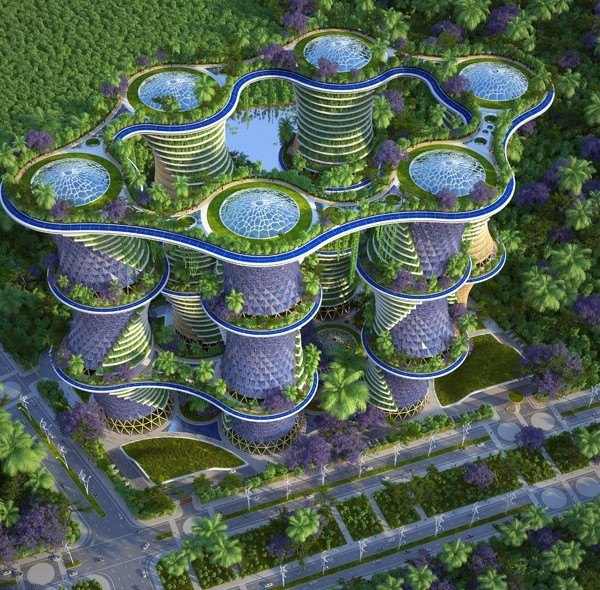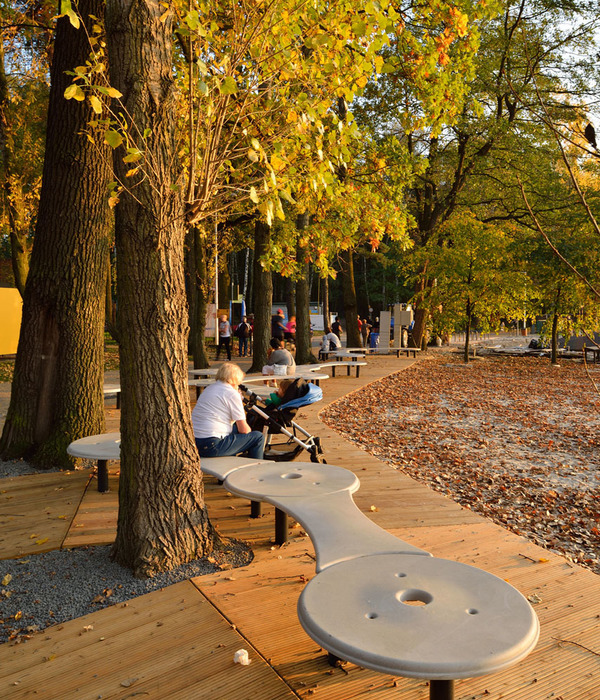在Mecanoo architecten的设计中,十二座塔楼高耸入云,立体的人行网络遍布其中,配以美丽葱郁的城市公园,赋予了深圳北站商务区独特的魅力。这次开发与深圳北站以及地铁站整合在一起,包括办公,零售,公寓和酒店等功能,总建筑面积高达136万平米,
With a scheme of twelve staggering skyscrapers, an elevated pedestrian network and a beautiful green urban park, Mecanoo architecten gives the Shenzhen North Station business district a distinct character. The 1,36 million square metres development encompasses offices, retail space, apartments and a hotel, integrated with Shenzhen North railway and metro station.
▼区域一览,overall view of the district
▼区域一览 – 站前广场,view from station plaza
公共公园
Public park
设计希望创造一个强烈的区域标识。商务区主要的建筑围绕一座中央城市公园设立,高度从278米到428米不等。主要的交通节点被设在地下,保证公共公园的开放性,弥补了该地区在开放的绿色空间方面的缺失。
The proposal aims to create a strong identity for the neighbourhood. The main buildings of the business district are set around a central urban park and vary in height between 278 and 428 metres. By situating the transportation nodes on the subterranean levels, the public park appears as an open green space, something the area currently lacks.
▼景观平面,建筑围绕中央公园设置,landscape plan, central park surrounded by towers
▼开阔的绿色空间,open green space
人行网络
Pedestrian network
两层的基础通过复杂的人行网络与公园糅合在一起,天桥、坡道和景观平台相互交织,让人们可以安全而又便捷地进入火车站和地铁站。面向公园的商业区形成了一个充满活力的公共空间。立体的人行网络将商务区中所有塔楼连接在一起,创造出令人舒适的小尺度氛围,巩固了邻里间的亲切感受。水景是城市公园的重要一环,凉爽的环境为人们提供了舒适的休闲、集会等活动场所。
The two-level plinth merges with the design of the park through an intricate network of overpasses, ramps and landscaped platforms that seamlessly weave into the urban setting, offering safe and comfortable access routes to the railway and metro station. Commercial areas face the park in order to generate a lively public space. The elevated pedestrian network connects all towers of the Shenzhen North Station business district, creating a comfortable small-scale atmosphere that reinforces the sense of a neighbourhood. Water features give the urban park a special character, offering cool places where people can relax, meet, and engage in leisure activities.
▼立体人行网络,水景穿插其中,elevated pedestrian network with water features
立面系统
Facade system
比起确定塔楼的具体形状,建筑师设计了一系列规则以保证建筑之间的联系,并且使不同建筑具有一定程度的差异性。智能幕墙系统由呈角度的元素组成,呼应朝向,变化丰富,在保证整体外观的同时承载不同功能。
Rather than define the exact shape of the towers, the design establishes rules which ensure coherency yet encourage a degree of variation. The smart facade system of glazed, angled elements offers diversity to support the different programmes and respond to the orientation while ensuring the overall appearance.
▼立面图,不同塔楼互有差异,上窄下粗,elevation, the towers vary from each other with setbacks on the upper part
▼立面幕墙变化丰富,various appearance of the buildings
退界
Setbacks
塔楼遵循同样的退界系统,建筑上部三分之二的投影面积比下部略小。这样的设计使得塔楼之间的形态相互呼应,可以拥有更加开放的视野和充足的日照。从功能角度来讲,参数的变化使建筑可以更好地适应混合功能规划。酒店位于塔楼上部,而对于需要更大灵活性的功能,如商场,会议中心和开放办公空间,则被设置在建筑底部。此外,退界的部分还可以形成屋顶花园,高层则采用室内天空花园的形式,使城市公园的设计理念融入到了建筑之中。
The towers are conceived within a system of equal setbacks so that the top two-thirds have a smaller footprint than the bottom thirds. The result is an ensemble of towers that respond to each other’s shape, allowing open views and daylight optimisation. From a functional perspective, the variation in perimeters provides better accommodation of the mixed-used programmes. The hotel programme is placed in the upper part of the tower, whereas the programmes that require maximum flexibility, like department stores, congress centres and open-plan office spaces, are incorporated into the base. The setbacks also allow for the creation of roof gardens, which – together with interior sky gardens at some of the higher levels – integrate the urban park design into the buildings.
▼退界形成屋顶花园,roof gardens generated by the setbacks
▼夜景,night view
▼总平面图,site plan
Programme: Urban design for 1,36 million m2 development with offices, retail, apartments and hotel, underground parking, connection to public transport hub, design public space, 1st Prize Competition
Design: 2017
Client: Government of Longhua District / Urban Planning, Land & Resources Commission of Shenzhen Municipality, China
Facade Consultant: VS-A.KR + VS-A.HK, South Korea and Hong Kong
{{item.text_origin}}

